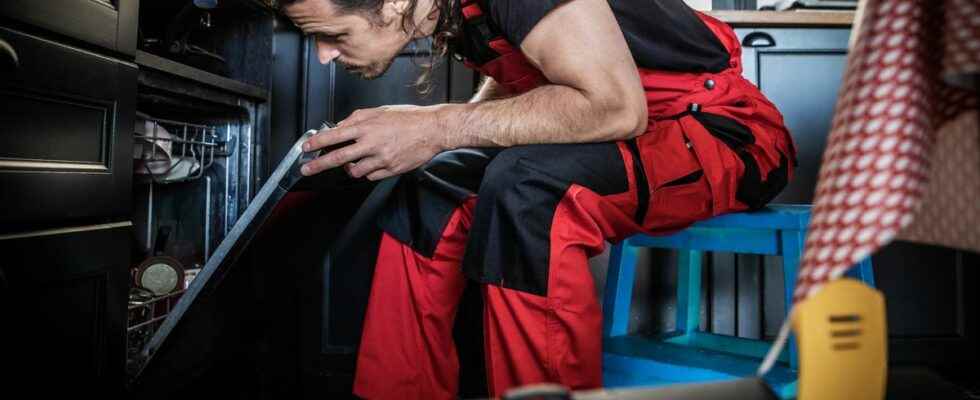On November 4, 2022, four new product families are joining the repairability index system. Mandatory since January 1, 2021, this repairability score – calculated by the manufacturers themselves using a very comprehensive scoring matrix – must be displayed by resellers and accessible to consumers. They must thus be able to get an idea of the ease with which they will be able to repair (or have repaired) each smartphone, television, computer, porthole washing machine or electric lawnmower marketed in France. Products which are therefore joined by top-loading washing machines, dishwashers, high-pressure cleaners and vacuum cleaners (whether wired, wireless or robots).
“The work to co-construct the index with all the stakeholders took time for the first five types of products (about 80 meetings and 4 years of work). The work to extend the repairability index to new categories began in March 2021, with around thirty working meetings which culminated in the drafting of the texts in January 2022, to which it was necessary to add 10 months for the legal validation of the texts”explains Anne-Charlotte Bonjean, repairability engineer in the eco-design and recycling department of Ademe.
“The entry into force of this index in France has had a beneficial effect on the repairability of many products far beyond our borders, since manufacturers operate on an international market and their R&D is global. Thus, when the we decide to make a modification to a product or to an after-sales service policy to improve its repairability score in France, this improvement benefits in the vast majority all European consumers, even worldwide in certain cases”explained to us recently Véronique Denise, president of Beko France and of the group of manufacturers of household appliances, Gifam.
With this measure of the anti-waste law (Agec), which has already been emulated by some of our neighbors and is promised a European future, the French State wishes to extend the life of electronic products and household appliances in an ecological concern, while – according to Ademe – 64% of broken devices still end up in the dumpster or are forgotten in the back of the garage.
“This information makes consumers aware of the possibility of extending the life and use of their appliances, in particular by directing their purchasing behavior towards products that are more easily repairable and by encouraging them to resort more to repairs in the event of It is a tool in the fight against obsolescence — whether planned or not — to prevent products from being scrapped too early and to preserve the natural resources necessary for their production.”explains the government.
Ademe confirms the interest of the device: “The balance sheet of the repairability index is positive: three quarters of consumers know and understand it (according to a Samsung survey), and they consider that the index is a criterion of choice in their purchases. Among manufacturers, the repairability index is also a success because we have been able to observe the efforts made by the manufacturers, whether on the provision of documentation, spare parts, the design review to reduce the number of dismantling steps, etc.”analyzes Anne-Charlotte Bonjean.
Subnotes that matter
As a reminder, the method for calculating the index (explained here and controversial in the eyes of certain associations) takes into account five criteria which are documentation, dismantling, availability of spare parts, their price and a last specific element linked to the type of product (for example, tracking software for smartphones). This is why UFC-Que Choisir encourages consumers to take a closer look at the products that interest them before purchasing, in order to understand the formula for each rating. Indeed, a handyman will be especially interested in the dismantling of the product and its documentation, while a customer who will necessarily have recourse to a repairer will be more sensitive to the duration of availability of spare parts to professionals.
This is one of the information made more readable by the site monindicedereparabilite.fr recently put online at the initiative of Gifam. It lists all the repairability indices for eligible products and acts as a link between manufacturers, retailers and consumers. You can easily see which clues have been transmitted on the platform by the brands themselves and which ones have been sucked up on public sites (those of manufacturers or retailers), knowing that the clues transmitted make it possible to make a quick and precise opinion on the qualities and defects of each product in terms of repairability.
Habit changes
“Talking about repairs was not something innate in our sector, because when a customer comes to the store, we don’t want them to imagine the product they haven’t yet purchased breaking down. Reliability was something intimately linked to personal or family experiences, and brands tried to stand out on this notoriety criterion.Today, the ecological emergency has changed a lot of things and talking about a product that ‘we will be able to repair and make it last is something rewarding, brands wishing to show that they have designed durable devices, that they know how to repair”says the president of Gifam.
And the latter to conclude: “November 4 is another big milestone for the repairability index, with the arrival of hundreds of new products. The deployment of all this takes time, there are very different products, so we have to evolve the methods and the criteria, but all of this should put us on the road to the sustainability index, which should arrive in 2024 if the roadmap is respected”.
